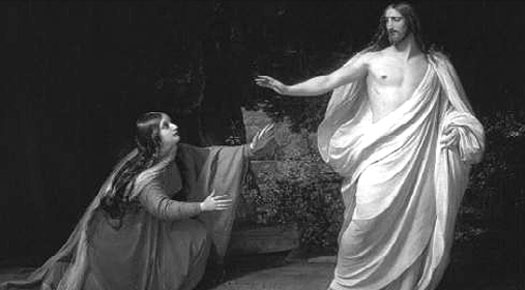
According to a new translation of an ancient manuscript, Jesus Christ was married to Mary Magdalene, who served as a co-messiah as well as the mother of his children. The authors of the translation suggest that a proper decoding of the Syriac manuscript has helped fill in significant gaps about Jesus’ life and shed light on the actual politics that led to his final crucifixion. Additionally, the text claims that conspirators had previously planned a plot to have Jesus murdered when he was only 20 years old. Part of that plan also included the murder of his wife Mary and their children.
However, the Church of England went on to clarify that The Lost Gospel is only the latest addition to the enormous wealth of misinformation about Jesus Christ that has been published over the years, accusing the book’s authors of trying to cash in on a lucrative income just before Christmas.
More ABC US news | ABC Health News
The controversial manuscript, which allows Christ to be presented as a mere human who valued love, marriage, sex and family, was translated from Syriac to English by investigative journalist Simcha Jacobvici and religious studies professor Barrie Wilson.
According to Jacobvici, Mary Magdalene was a woman of high stature and revered as a goddess by her own followers, as opposed to the common notion that Christians share about her having been a low prostitute.
“It goes way beyond marriage. … It describes (Mary Magdalene) as a co-messiah, co-deity, defender of humanity. … This shows her as the leader of the Gentile (non-Jewish) church. She is called the mother of virgins. This text is called the story of Mary Magdalene. It's about her,” said Jacobvici.
The ancient manuscript that The Lost Gospel is based on comprises of 29 chapters and dates back to 570 AD. In 1847, the British Museum had reportedly bought the manuscript from an Egyptian monastery, eventually transferring it to the British Library as recently as 20 years ago. The manuscript tells the tale of Joseph, who received a coat of several colours in the Old Testament, and his wife Aseneth. Even though the names Jesus and Mary have not been found in this ancient document, Jacobvici and Wilson claim Joseph and Asaneth represent the pair. They believe the names of Joseph and Aseneth’s sons Ephraim and Manasseh may also be cryptic.
The authors allege that the original manuscript was written as long ago as in the 1st century, after which its religious content has been regularly and repeatedly copied by Egyptian monks in order to keep alive the religion. According to Wilson, scholars have known about this text for approximately two centuries but they have not known what to make of it until now. Even though religious experts have known the story of Joseph and Aseneth for years, Jacobvici and Wilson believe certain subtleties were lost when the text was translated into Latin and Greek during the 12th century. By going back to the ancient Syriac language, which is of Middle Eastern origin and dates back to the 4th century, Jacobvici and Wilson claim they were able to decode the original text in entirety and decipher much of its lost content.
Most importantly, they said, the manuscript was accompanied by two letters, one of which pointed to the fact that the person sanctioning the Syriac translation was completely aware of the great risk he or she was taking. The letters reveal that the manuscript is in fact written in code language because it contains a hidden message about Jesus Christ’s life. Reportedly, one of the letters was found mysteriously cut in half as well.
Jacobvici and Wilson deciphered the code of the manuscript with the help of American digital imaging experts who used state-of-the-art equipment to see through each and every ink smudge and determine the true message.
“We have not just found a text and put Jesus in as a metaphor. … Christian monks religiously copied this text for hundreds of years. Joseph is called Son of God. The language is very graphic. It says that Joseph, also known as Jesus, had sexual intercourse with Mary Magdalene. … A story about Joseph and Aseneth as Israelites would have been of no interest to monks,” Jacobvici said.
Reverend Arun Arora, director of communications at the Archbishop’s council, said the biggest problem with the spurious claims of The Lost Gospel is the lack of mention of Jesus or Mary Magdalene in the ancient manuscript.
“There is now such a high degree of religious illiteracy in society that people lack the rigor to tackle such spurious claims in the same way they would if the author had written a book saying the moon was made of blue cheese,” he said.
Arora went on to explain since Dan Brown published his bestselling novel titled The Da Vinci Code in 2003, an entire industry that makes use of useless conspiracy theorists, opportunistic publishers and baseless satellite channel documentaries, seems to have emerged after noticing a lucrative income stream.
Photo Credits: Wikimedia
